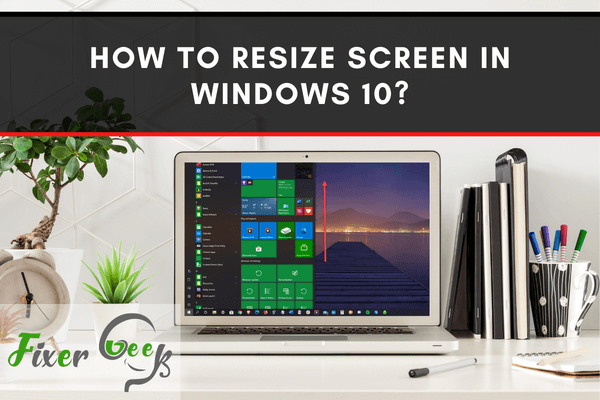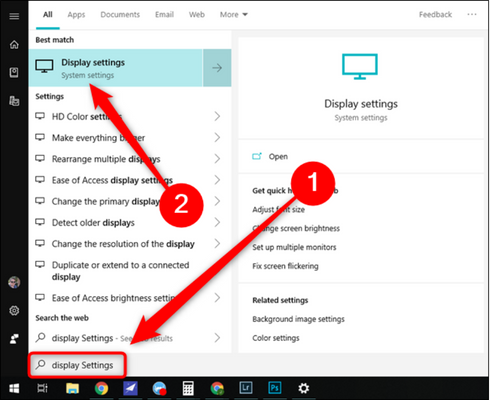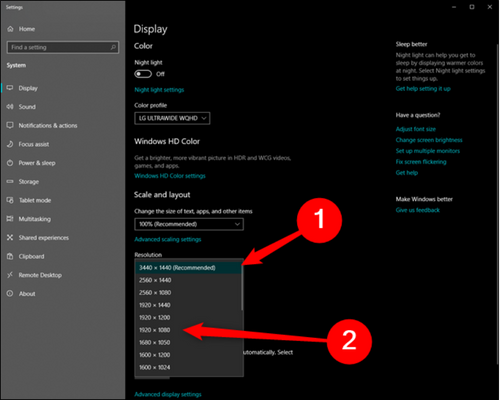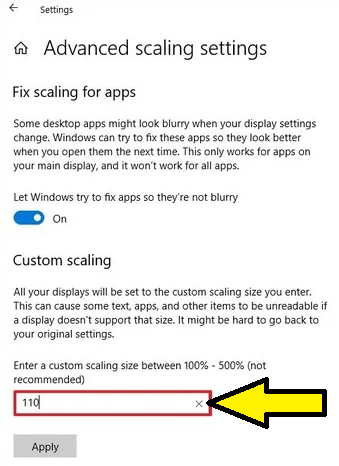No matter how big your screen is, there are times when it won't work for everybody. You can't see the entire thing, or start menu and other controls are hard to find. This article will show you How to resize screen in Windows 10?.

Do you have difficulties reading text on your screen? Do the icons seem smaller to you while your desktop screen seems more spacious? The possible reason could be your monitor’s default settings.
As you try to connect your monitor, it will automatically adjust to its default resolution. The good thing is, you can resize the screen on your Windows pretty easily. This also allows you to adjust the resolution, scale the screen larger, or adjust the text size only.
Changing the Resolution In Windows 10?
- Click on the ‘Start’ button.
- On the search box, type ‘Display settings’. Select the result with the exact match.

- Choose ‘System’.
- Click on the ‘Advanced display settings’ option.
- Under the drop-down ‘Resolution’ menu, click on the down arrow.
- Select any resolution you want. The one with ‘Recommended’ is highly encouraged for most users. However, if you have a high-definition monitor, you can usually go for a resolution ranging from 1280*720 to 3840*2160.

- After selecting the resolution you want, click on ‘Apply’.
- Adjusting the Scaling of Monitors
Scaling adjusts your monitor screen proportionally. If you think of the screen as a camera display, scaling is like zooming in or zooming out the captured image. Here are the steps on how you can manually adjust the scaling of multiple displays:
- Click on the ‘Start’ button.
- Click on ‘Settings’.
- Select ‘System’.
- Select ‘Display’.
- Under the ‘Scale and layout’ section, enable the drop-down menu.
- Choose any of the scale settings suitable for your needs. The options available are 100 percent, 125 percent, 150 percent, and 175 percent.

- If you want finer scaling and options for increasing more percentage, click the ‘Advanced scaling settings’ option under the ‘Scale and layout’ section.
- Under the ‘Custom scaling’ section, specify a scaling size between 100 to 500 percent. However, keep in mind that increasing the scaling means all of the components on the screen will appear larger than normal.

- If you need to adjust the size of apps, text, and other components just slightly bigger, try using the 110 percentage as the new scaling value.
- Click ‘Apply’.
- Granted you have more than 1 monitor and the setup is ‘Extend’, slide the main screen across the second screen to check the scaling between them. Observe the changes.
- Making The Text Appear Bigger
If you don’t want to adjust the size of icons and graphics but the text only, you can do so by following the steps below:
- Click on the ‘Start’ button.
- Click on ‘Settings’.
- Click ‘Ease of Access’.
- Click ‘Display’.
- Under the ‘Make text bigger’ section, adjust the slider to choose other font sizes accordingly.

- If you are satisfied, click ‘Apply’. Wait for the changes to occur.
Summary: Resize screen in Windows 10
- Open the Photos app.
- Click on the photo you want to resize.
- In the top toolbar, click Edit & Create (the pencil icon).
- Choose Resize in the menu that appears on the right.
- Pick a size preset or customize your own, then click Resize.
Conclusion
Do not burden your eyesight with the default settings of your computer. Now that the monitors available are commonly capable of very high-definition format, you need to adjust them for normal usage. You can either adjust the resolution, the screen scale, or the text font size through the aforementioned steps.